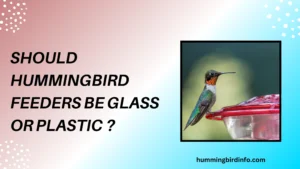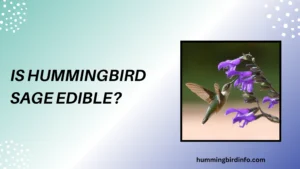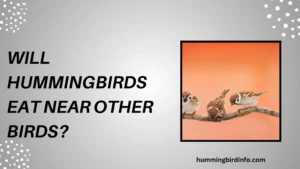Hummingbirds are tiny wonders of nature, darting through the air with balletic grace and a blur of iridescent feathers. These high-energy pollinators bring joy to gardens and windowsills alike, leading many of us to offer nectar feeders to help support their endless search for fuel.
But while filling a feeder seems simple, where you hang it could make all the difference.
Many people hang feeders in sunny spots thinking they’ll be more visible or appealing to birds. But the combination of heat and sunlight can lead to fast-spoiling nectar, harming the very birds we’re trying to help.
This brings us to a deceptively simple but important question: Should hummingbird feeders be in the shade?
In this post, we’ll dive into the effects of sunlight on nectar, the benefits of shade, and how to find the best placement for your feeders. You’ll learn how feeder location impacts everything from bird health to sugar fermentation.
If you care about supporting hummingbirds the right way, read on — this article is for you.
Contents
- 1 I. The Impact of Sunlight and Heat on Nectar
- 2 II. The Benefits of Shade for Hummingbird Feeders
- 3 III. Considerations and Nuances of Feeder Placement
- 4 IV. Practical Tips for Placing Hummingbird Feeders
- 5 Conclusion:
- 6 FAQs
- 6.1 1. Why is it bad to put a hummingbird feeder in direct sunlight?
- 6.2 2. Will hummingbirds find a feeder in the shade?
- 6.3 3. How often should I clean my feeder if it’s in the sun?
- 6.4 4. Can I hang a feeder under a tree?
- 6.5 5. Does shade affect the sugar concentration in nectar?
- 6.6 6. What kind of feeders are best for sunny areas?
I. The Impact of Sunlight and Heat on Nectar
Direct sunlight may seem harmless, but it speeds up the fermentation of sugar in hummingbird nectar. As the liquid heats, bacteria and fungi multiply quickly, transforming sweet nectar into a toxic brew. This spoiled nectar can deter birds or cause digestive issues.
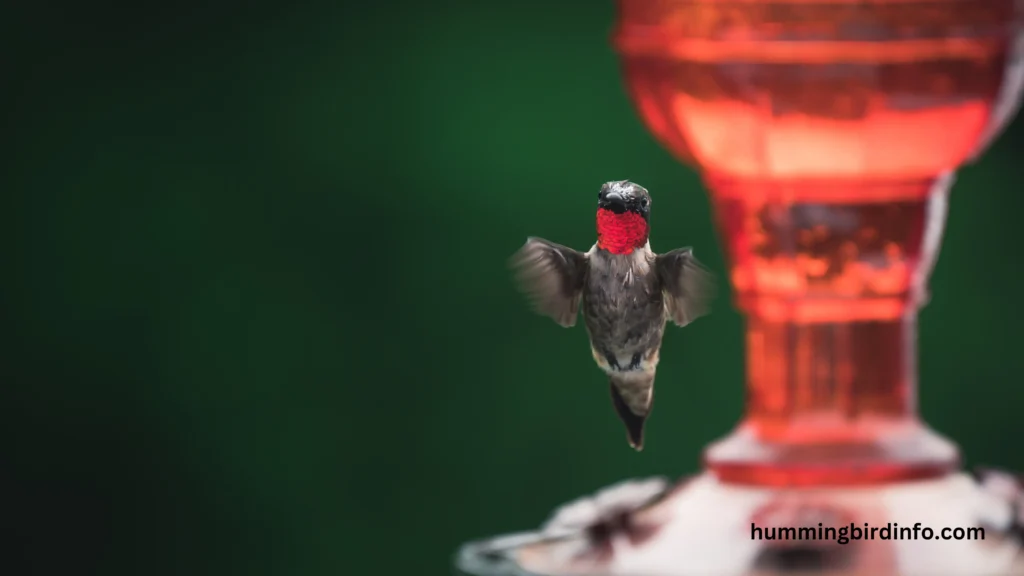
When heat is combined with sunlight, the feeder becomes a mini incubator for microorganisms. Mold, yeast, and bacteria flourish in this environment, producing cloudy nectar with black spots or off smells. These signs are warnings that the nectar is no longer safe.
Sunlight also leads to rapid evaporation, especially in hot climates. As water content decreases, the sugar concentration increases beyond safe levels. Hummingbirds then risk dehydration, as thick nectar is harder to consume and process.
In hot regions, spoilage can occur within just a day, meaning nectar must be replaced far more often. This increases maintenance for you and reduces the chances of birds consistently finding safe, fresh nectar.
Sun exposure can also affect feeder material, especially plastic ones, which may warp or leach chemicals. These issues further compromise nectar quality and pose additional risks to bird health.
II. The Benefits of Shade for Hummingbird Feeders
Placing your feeder in the shade keeps the nectar cooler, significantly slowing down microbial growth. This helps the solution remain fresh and safe for longer periods, reducing spoilage and waste.
Cooler nectar also retains the proper sugar-to-water ratio, ensuring it stays within the optimal range for hydration and energy. Shaded feeders prevent the solution from thickening due to water loss through evaporation.
Hummingbirds, like humans, may find shaded areas more comfortable on hot days. Sun-exposed perches can get too hot to rest on, making a shaded feeder a more inviting space for longer feeding sessions.
Feeders that stay fresh and comfortable are more likely to earn a reputation among local hummers. Over time, you might notice an increase in visits to your shaded feeders, as birds learn where to find reliable nourishment.
In addition to bird health, shaded feeders reduce your workload. You won’t have to clean and refill them as frequently, making your efforts more sustainable and effective.
III. Considerations and Nuances of Feeder Placement
Not all shade is equal—partial shade, such as morning sun with afternoon cover, can be the ideal balance. It keeps nectar cool during the hottest hours while still providing visibility for hummingbirds.
Full shade might sound like the safest option, but overly dark or hidden spots can attract predators like cats or snakes. Also, hummingbirds might not easily notice feeders placed in dense foliage.
Your climate plays a big role. In the cool Pacific Northwest, feeders in morning sun might be fine. In Texas or Florida summers, however, you’ll want to prioritize deep afternoon shade to avoid rapid spoilage.
The material of the feeder also matters. Dark-colored feeders absorb more heat and should always be shaded. Choose light-colored, UV-resistant feeders made of glass or thick plastic for best results.
Every yard is different. The best way to know what works is to observe and experiment. Try placing feeders in different areas and track where birds go, how quickly nectar spoils, and which feeders are most visited.
IV. Practical Tips for Placing Hummingbird Feeders
Aim to hang your feeder where it gets shade in the afternoon, especially during summer. The late-day heat is most intense, and shading your feeder then can prevent overheating and spoilage.
Some morning sun can be helpful to make feeders easier for hummingbirds to spot. However, avoid placing them in spots with direct midday or afternoon sunlight, particularly in warmer regions.
Position feeders near shrubs or trees that provide both shade and natural perching areas. Hummingbirds love to rest between feedings and feel safer with nearby cover.
Think about your own routine—choose spots that are easy to reach for cleaning and refilling. If it’s a hassle to access, you may be less likely to maintain it properly.
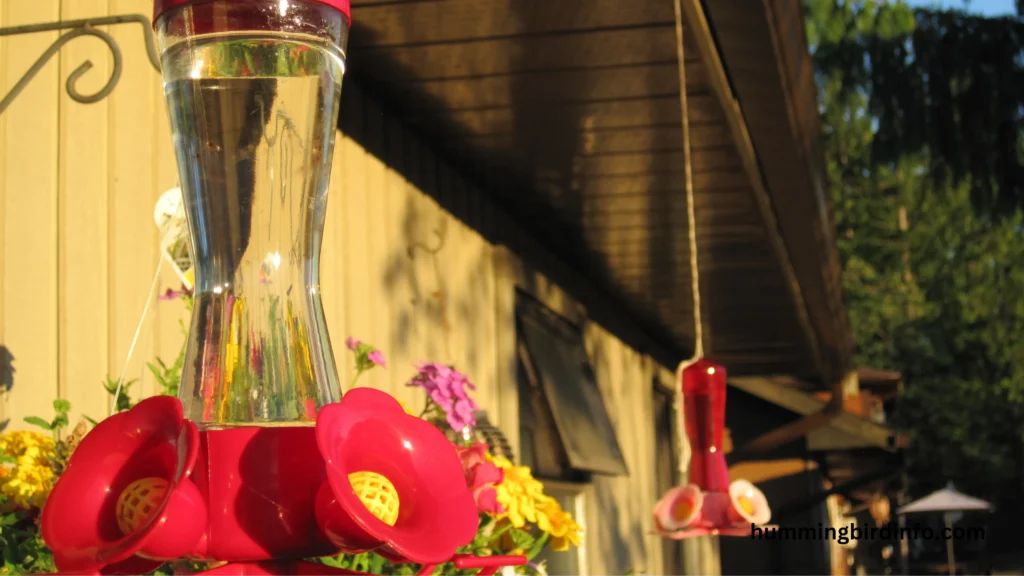
Avoid placing feeders near pesticide-treated areas or spots with frequent human or pet activity. The best feeders are in quiet, safe, shaded areas where birds can feed in peace.
Conclusion:
Choosing where to hang your hummingbird feeder may seem like a small decision, but it has big consequences. Direct sunlight can lead to spoiled nectar, bird discomfort, and more maintenance.
Shade offers many benefits: it slows down fermentation, keeps nectar from evaporating, and makes the feeder more comfortable for the birds. It also keeps your feeder more inviting and reliable.
However, there is no one-size-fits-all answer. Your local climate, landscape, and feeder design should guide your placement. Partial shade, especially with afternoon protection, is often ideal.
Whether your feeder hangs under a tree or beneath a shaded porch, what matters most is your attention and care. Regular cleaning, fresh nectar, and thoughtful placement show your commitment to these tiny aerial jewels.
Try experimenting with shaded spots in your yard and see how your feathered friends respond. The right placement can help you enjoy the magic of hummingbirds while keeping them healthy and safe.
FAQs
1. Why is it bad to put a hummingbird feeder in direct sunlight?
Sunlight heats the nectar, speeding up spoilage and fermentation. This can make the nectar unsafe or unappealing for hummingbirds.
2. Will hummingbirds find a feeder in the shade?
Yes, especially if it’s placed near bright flowers or open areas. Birds rely on memory and sight, and they will quickly learn the location of a reliable food source.
3. How often should I clean my feeder if it’s in the sun?
In sunny, hot conditions, feeders may need cleaning every 1–2 days. Shade can extend this to 3–4 days, depending on the weather.
4. Can I hang a feeder under a tree?
Yes, trees offer great natural shade and protection. Just ensure it’s visible and not placed where predators can easily reach it.
5. Does shade affect the sugar concentration in nectar?
Yes, shade reduces evaporation, keeping the sugar-to-water ratio balanced and safe for hummingbirds to consume.
6. What kind of feeders are best for sunny areas?
Choose light-colored, UV-resistant feeders and try to shield them with natural or artificial shade. Glass feeders may also stay cooler than plastic.


